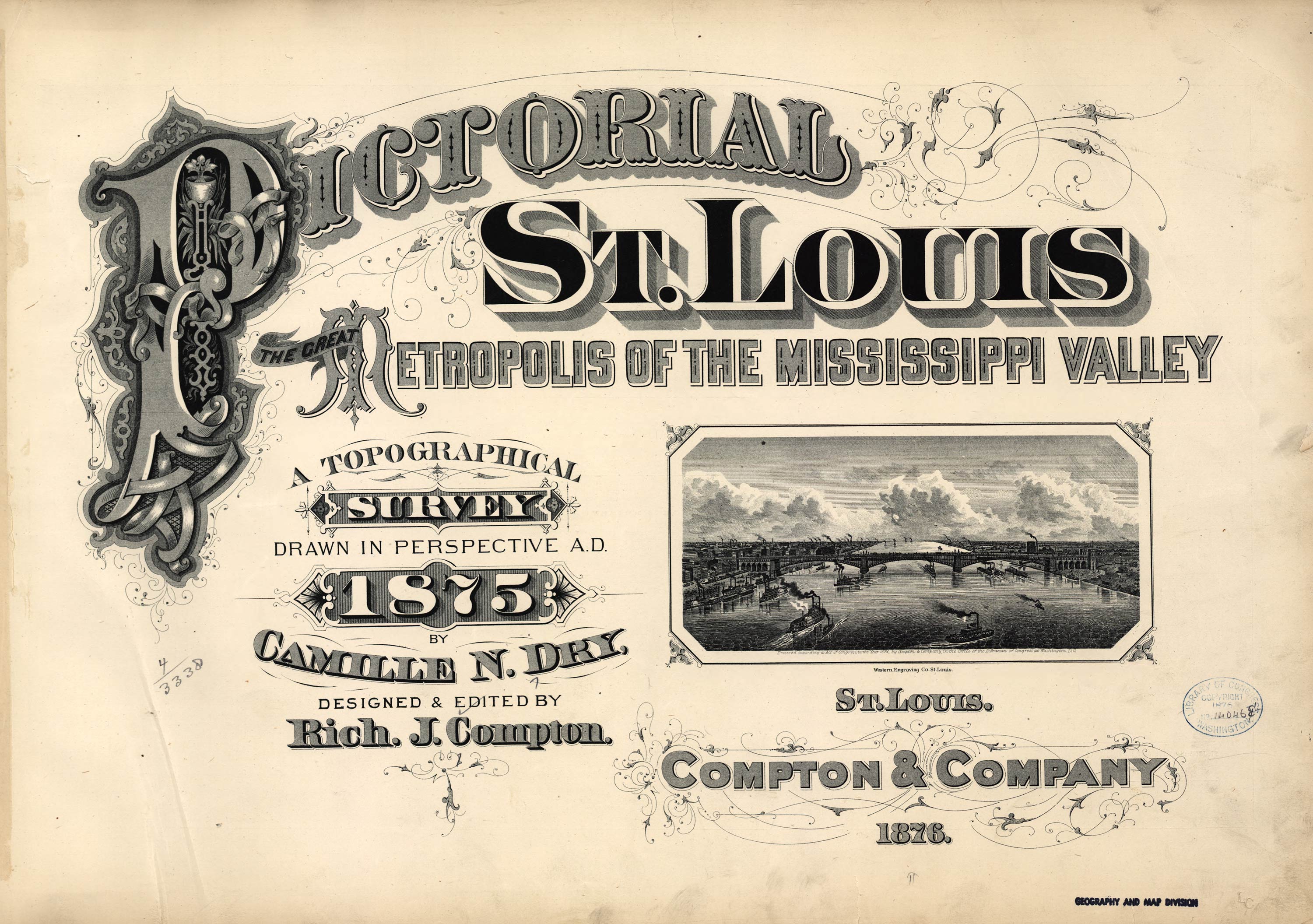

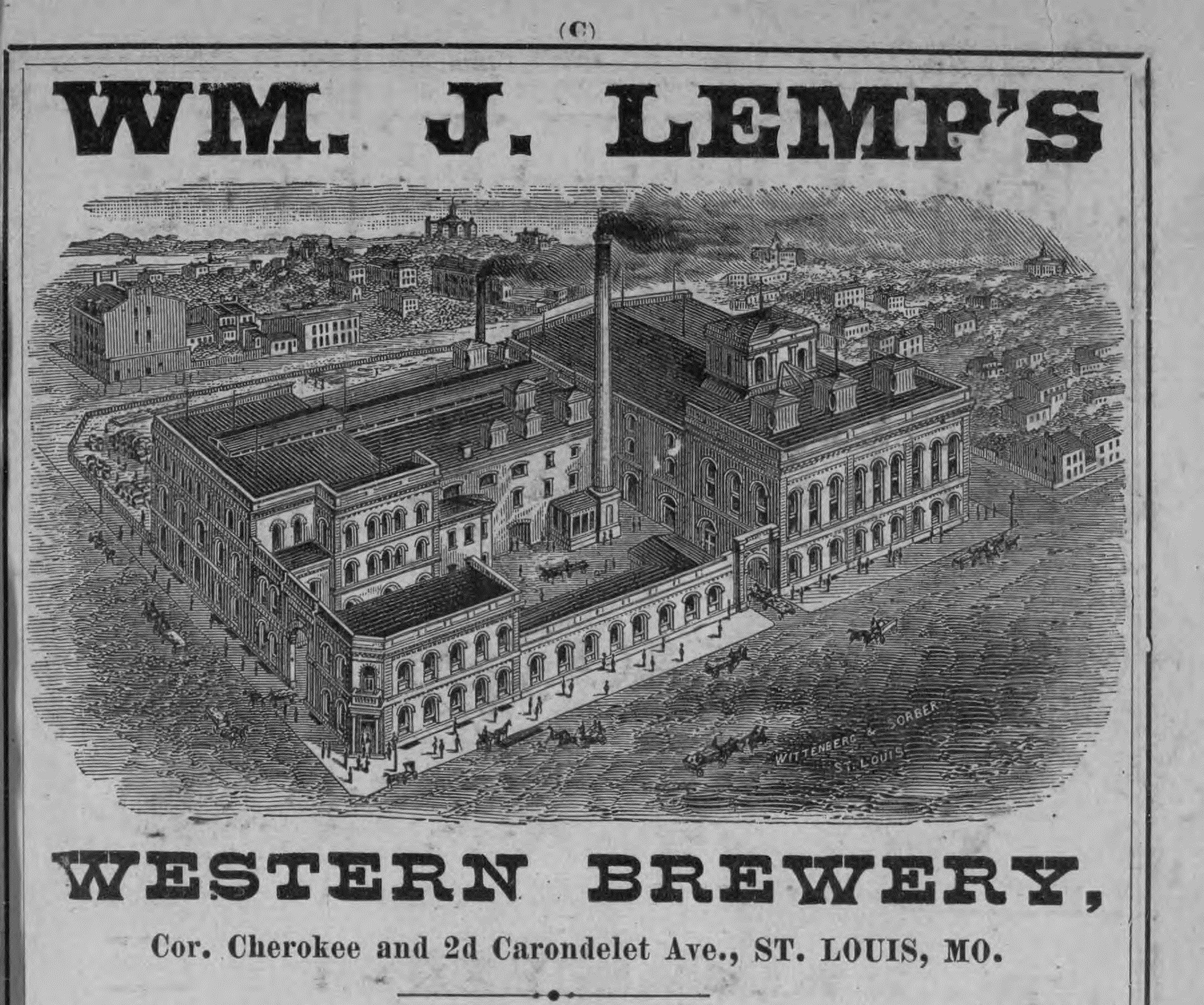
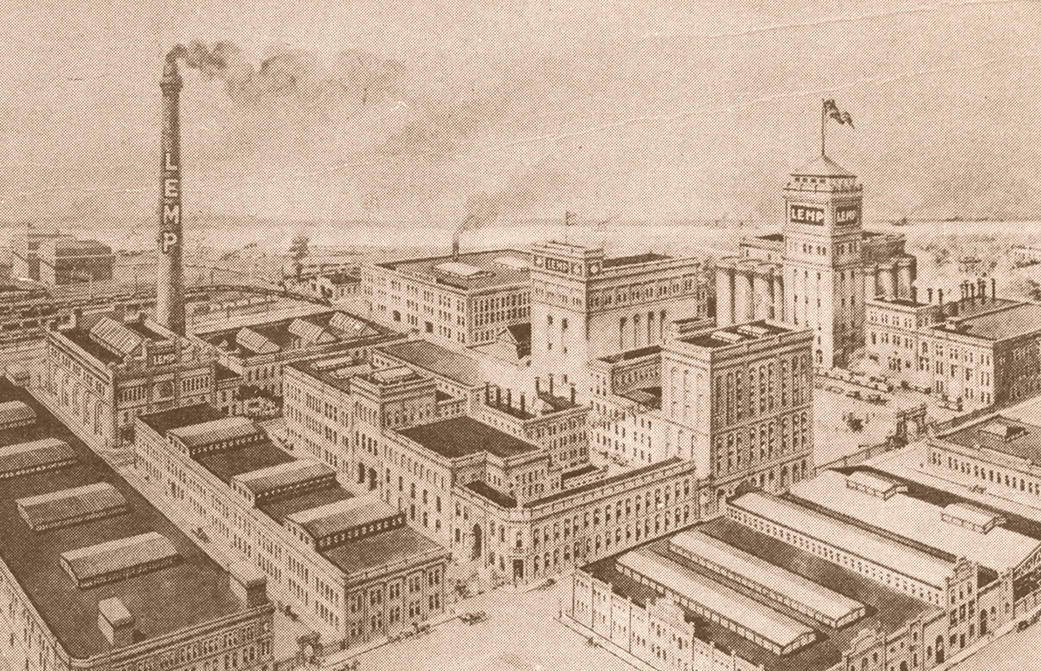
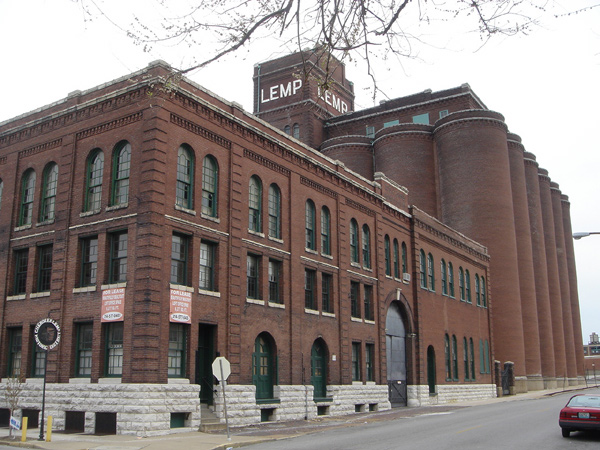

Wm. J. Lemp is to-day, as he has been for a period of years, the great representative of the brewing interest of St. Louis. An interest that employs a capital greater than that used in the manufacture of flour, that gives employment directly to almost as many persons, and that distributes its product and draws its revenues from a wide extent of country. His father, Adam Lemp, manufactured the first lager beer in St. Louis, in a brewery which he established in 1840. Adam Lemp was a thorough practicaI brewer, and Wm. J. Lemp was foreman in his father's brewery on Second Street, between Elm and Walnut and learned the business in a most thorough manner.
In 1862, at his father's death, he took possession of the brewery, and a few years afterwards commenced building his present collassal establishment. Had the view which is given in these pages on plate No. 9, been taken from the northeast it would give the fronts of the various buildings, and show them to better advantage as a whole, yet their extent, as well as that of the cooperage and other structures auxilIary to them, is very completely shown.
The first building was the brewery proper, then were added in quick succession the malt house, which is one of the finest in the United States, then the offices, and lastly the east front of brewery and ice house, the whole establishment covering just one block of ground, opposite which, on the east, are the cooper shops, and on the north the stables. The whole of the main buildings cover an area of 281 feet on Cherokee Street by 142 feet on Second Carondelet Avenue, forming a rectangle, through the interior of which run two paved wagon ways. The lofty chimney and extensive buildings, three stories in height, form the most striking feature in that part of the city. But it is not alone the part which strikes the eye that forms the extent of the brewery, for it has its extensive ramifications below ground as well as above it.
A cave admirably adapted for the storage of beer, than which nothing could be more spacious or convenient, extends under a large area, at the depth of fifty feet from the surface, or on a level with the third cellars under the buildings. Walking through this cave, piled on either side with huge casks in which the cooling beverage is ripening, one can but note the level roof of solid rock overhead from which stalactites have in some places been cut, the dry, gravelly floor, the dip that gives a fine natural drainage, and the height that seems proportioned for the very purpose of storing casks of beer.
The machinery, as would be expected in an establishment carrying on such an enormous business, is all of the latest construction, fitted to save labor in each one of the departments, for though the space at command is ample, each part of it seems to be utilized. A fine seventy-five horse-power engine furnishes the power for the whole. The boilers are set back underground, in a cellar separately constructed for them apart from the building. Steam pumps supply the establishment with either hot or cold water, and are also used in raching the beer. There are also pump attachments which could be turned on in case of fire, and they are of sufficient capacity to soon subdue any accidental fire that might occur. The malt house is 106 feet front by 142 feet deep, four stories high above ground, and three cellars deep, including lager beer cellars. Here, every malting season, there are prepared about 125,000 bushels of malt. It is furnished with the requisite sprouting floors, kilns, and three elevators-one each for barley, malt, and sprouted barley, making an establishment of extraordinary magnitude in itself. The cellars are laid up in massive limestone blocks, the masonry of which seems heavy enough to support any weight whatever.
The brewery building has, besides the brewing apparatus, in convenient rooms, a large wash-room for cleansing packages, a dining hall where employees eat their lunch, and a large, airy room where those employed sleep, each being furnished with a wardrobe and separate conveniences. Beneath the brewery, again, are spacious cellars, two in depth, paved and vaulted. Leading out from the lower of these is the cave. Immediately over the arched opening, as if guarding the entrance, is the imprint of a gigantic turtle, caught in the stratum while it was yet a plastic mass.
The amount now invested in buildings and machinery is considerably in excess of $200,000. This, in addition to the large sums necessary to make purchases of barley and hops , and store the beer until it arrives at perfection, represents the magnitude of an interest which is here managed by able hands, on a spot where nature and art have combined to present every facility. There were sold from this brewery last year over 42,000 barrels of beer, which, to brew and deliver, gave employment to sixty men, and eight teamsters, with their horses and wagons. The ice used is stored in two spacious ice-houses, located near the river bank. Mr. Lemp had seen the demands for his production increase so fast that in building here he determined to prepare for future additions, and so built that each department can be enlarged without inconvenience. Although yet comparatively a young man, he has had an experience of nearly twenty years in the practical as well as the business operations of brewing in St. Louis. Besides directing the business of his immense establishment, he also gives a personal attention to the brewing, and is able to carry out in that department the ideas that have been found to make a beverage suited to the taste of St. Louis and the country around. Those skilled in the art of making beer divide it under five different heads, viz. : proper selection of the natural productions that enter into it, as barley and hops ; the watching of the changes which the barley must undergo, as malting and mashing; the formation of a proper wort from the mashed malt and hops; the fermentation of that wort; and finally, the fining and ripening of the beer produced. The establishment here under consideration has been especially fortunate in each of these operations, guided, as they have been, by an experience so carefully gained; and as a consequence its beer has enjoyed a fame at home and abroad which no other has been able to excel.
Mr. Lemp is a thorough St. Louisian, keenly alive to the interests and prosperity of the city. Liberal, kindly, and energetic, he is a superior representative of the character and power of a business that has been created here within the last thirty-five years, and that is now so widely extended. The remarkable success which he has achieved, and the steadiness with which he has conducted an immense business, demonstrate his administrative talent, and show him to be a man too simple and too strong of purpose to swerve from any plain duty that stands before him.

Pictorial St. Louis
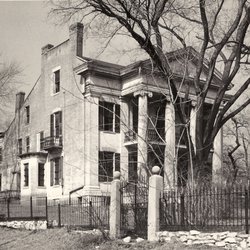
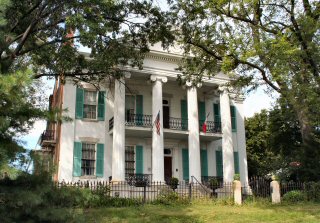

The historic Chatillon-DeMenil Mansion is the place to get a firsthand experience of St. Louis' French heritage. The museum was once home to famed western guide and hunter Henri Chatillon. Chatillon and his second wife Odile constructed the original section of the house in 1849 at the top of Arsenal Hill to command a view of the Mississippi River.
In 1863 the DeMenil family completed a magnificent addition which turned the Chatillons' modest home into a Greek Revival mansion. Dr. Nicolas N. DeMenil and his wife Emilie Sophie Chouteau (the great-grand-daughter of Mme. Chouteau and Pierre Laclede) lived here with their son Alexander. The extended family occupied the house until Alexander's death in 1928.
With many of the antiques and artifacts original to the home, this Greek Revival mansion has been restored to interpret the decorative arts and architecture of the Victorian era. Two rooms are devoted to the 1904 World's Fair, featuring the largest collection of Louisiana Purchase Exposition memorabilia on public display. Open for tours March — December, the Chatillon-DeMenil House is a place to hear stories of the Western fur trade, Creole connections to the Sioux and Osage, the growth of a great city, and everyday life in the Victorian era.
The Chatillon-DeMenil House Foundation is the 501(c)3 nonprofit corporation entrusted with the conservation and interpretation of the Mansion. The Foundation is supported by individual gifts and memberships, foundation grants, income from special events, tour revenues, and a gift shop. Fundraising and planning are overseen by a volunteer Board of Directors.
